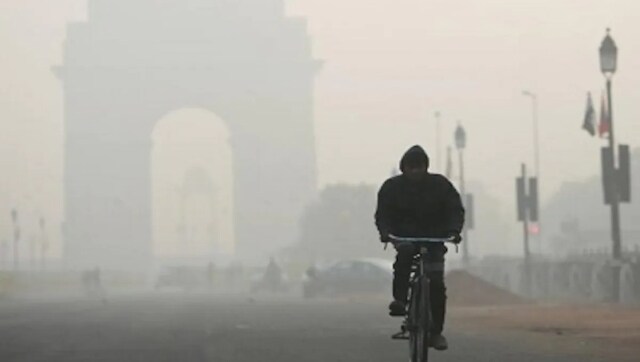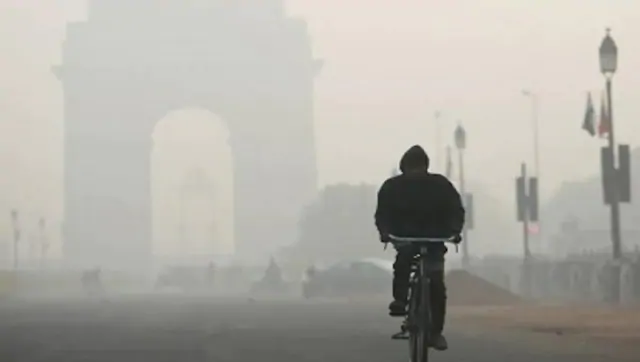The Commission has asked the Delhi Pollution Control Committee (DPCC) and the Delhi government to “work in close coordination with the industrial units” to meet the deadline

Representational image. ANI
“We don’t know what your commission is doing. People in Delhi are not satisfied with your work. We are also not satisfied”.
These remarks were made by a Supreme Court Bench headed by Chief Justice of India SA Bobde on 17th December. That was six weeks after the ordinance on “Commission for Air Quality Management (CAQM) in National Capital Region and Adjoining Areas Ordinance 2020” was promulgated on 29th October . The super commission subsumed practically every other law and agency dealing with air pollution in this region.
Solicitor General Tushar Mehta responded to the judges’ scathing comments saying the government was “working on a war footing”. The bench will hear more on the “war footing” steps taken and their impact in the second week of January.
Though the ordinance seeks to keep courts away from all things to do with air pollution management in the NCR, the reality is that the apex court continues to drive government action towards bringing down air pollution in the Delhi NCR.
The SC has only held in abeyance the Lokur Committee it had appointed on 16th October for paddy stubble management. The centre had reservations against the appointment of the Lokur Committee and so came up with the ordinance which, they claimed, had been in the works for many months.
Though the CAQM now has a chairman in former Delhi Chief Secretary MM Kutty, it was pure tokenism on its part till the SC stepped in. The commission had first met on November 9th ahead of Diwali and called for public support in managing air pollution during the festival season. But stung by the tone of the Supreme Court observation, the CAQM showed some action within a week.
Token Measures
On 22nd December, the Commission reviewed the progress of industrial units operating in the capital switching to Piped Natural Gas, one key recommendation for controlling NCR’s air pollution. It has now set 31 January, 2021 as the deadline for this switchover.
While many of the 1644 industrial units spread across 50 industrial areas were working on the switchover, the CAQM urged the two main suppliers, Gas Authority of India Ltd and Indraprastha Gas Ltd, to expedite completion of the required pipeline network, metering and associated infrastructure. The Commission has asked the Delhi Pollution Control Committee (DPCC) and the Delhi government to “work in close coordination with the industrial units” to meet the deadline.
The CAQM also directed DPCC to inspect and identify industrial units using unapproved fuels and to take stringent penal action in case of non-compliance. The next day, the Commission pulled up violators of construction waste rules and guidelines, and directed the Central Pollution Control Board (CPCB) and the pollution control boards of the states falling in NCR to constitute teams and inspect and enforce the rules.
In no time at all, 227 teams were constituted, and inspections and surprise checks carried out at more than 3000 construction and demolition sites. Of these, 386 sites were found violating the rules. The Central Pollution Control Board ordered work to be halted at 12 locations, and by January 5th, it had imposed a fine totalling Rs 2.76 crore on some units.
Till the steps taken on December 22nd and 23rd, few people, including those working on area of air pollution issues in the capital, had any knowledge of what the CAQM was doing. Not that anyone expected the CAQM to magically change the direction of the winds to blow away the pollution hanging over the NCR. But people did expect to see some directions and activities on the ground, and a drop—however minor—in air pollution.
Lives lost
One out of every eight deaths in India is attributable to air pollution. Air pollution now contributes to more disease burden than tobacco, and 77 percent of our population is exposed to outdoor air pollution.
“Given the power the Commission has, we expected it to do a lot – in areas of public transportation, industrial pollution, construction and debris, waste management,” said a senior environmentalist on condition of anonymity. “But we did not see any urgency on their part just when north India is at its worst – with or without the paddy stubble burning, which is a very small part of overall pollution. We hope the pace will now get accelerated, without waiting for a ‘severe’ AQI day or a Supreme Court nudge.”
As the world celebrated Christmas, air quality in the NCR was very poor with the index over 400. “First, we had EPCA, which had not done much to ensure a holistic solution for the perpetual problem of pollution in the northern India belt,” said Sushmita Banerjee, an air pollution management and policy researcher. “Now this new commission is doing nothing different and there has been no proactive step from the commission apart from tokenism.”
“We can set up a hundred bodies, but what is the use if we continue to breathe dangerous levels of pollution?,” says Sushmita Banerjee, Researcher on Air Pollution Management & Policy
The concerns and questions over the CAQM not being proactive and effective, are legitimate. On December 8th, the Indian Council for Medical Research, the Public Health Foundation of India and the Department of Health Research in the union ministry of Health and Family Welfare jointly released the state-wise findings of the first comprehensive estimates of the impact of air pollution.
The India State Level Disease Burden Initiative, a part of The Global Burden of Disease Study 2019, has said that one out of every eight deaths in India is attributable to air pollution. Air pollution now contributes to more disease burden than tobacco, and 77 percent of our population is exposed to outdoor air pollution, the study added. And it is not just about people dying. The study, published in The Lancet on December 21st puts the total economic loss on account of premature deaths that can be attributed to air pollution at 36,804 million dollars.
It remains to be seen if these figures spur the CAQM into taking other long-needed measures to curb air pollution over NCR.
This article was first published in Citizen Matters, a civic media website and is republished here with permission. (c) Oorvani Foundation/Open Media Initiative.
Find latest and upcoming tech gadgets online on Tech2 Gadgets. Get technology news, gadgets reviews & ratings. Popular gadgets including laptop, tablet and mobile specifications, features, prices, comparison.
This article is auto-generated by Algorithm Source: www.firstpost.com


